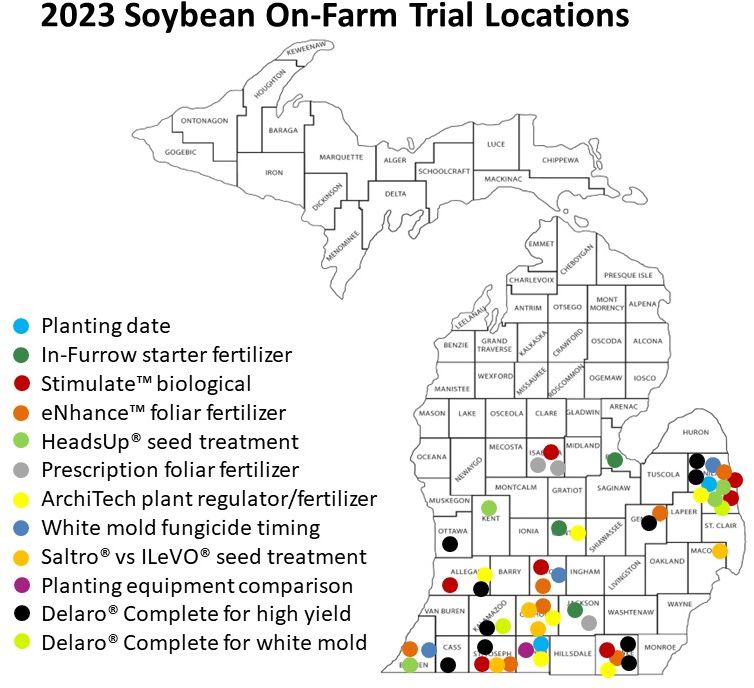The 2023 Michigan Soybean On-Farm Research Report is available
Soybean producers and agribusiness representatives can download the results from 12 different on-farm research projects conducted by MSU Extension and the Michigan Soybean Checkoff.

The 2023 Michigan Soybean On-Farm Research Report is now available online. The report will be mailed to 11,000 Michigan soybean producers later in December, but the online version is the best way for agribusiness managers, sales representatives and agronomists to access the report, as it will be mailed to only Michigan soybean producers.
The report summarizes the results from 12 different soybean projects conducted by Michigan State University Extension and the Michigan Soybean Checkoff evaluating products and management practices having the potential to increase soybean yields and income. All but one of the projects were conducted at multiple locations in 2023 and most were conducted over multiple years. Thirty-eight soybean producers conducted 52 individual on-farm trials in 2023. The trials fall within four categories: 1) plant nutrition, 2) pest management, 3) seed treatments and 4) crop management.

All treatments were replicated at least four times in all the trials to reduce the effect of field variability on the results. Proven statistical methods were used to determine if the treatments had a statistically significant effect on soybean yields. Finally, the effect that the treatments had on income was determined for each project.
One of the comments I’ve heard most often about past Michigan Soybean On-Farm Research Reports is there is little or no difference in the yields produced by the treatments and the untreated control in some of the trials (no magic/silver bullet was found). This is the case for some of the products and practices evaluated in 2023. However, this is still valuable information as there are two ways to increase income: increasing yields and reducing costs. If the new treatment does not perform significantly better than the untreated control when evaluated across multiple locations and over several years, producers may be able to save money and increase income by not using the product or implementing the management practice.
The research report was a team effort. However, please contact me (Mike Staton) if you have any questions or comments regarding the report. You can reach me by phone at 269-355-3376 or by email at staton@msu.edu.
This article was produced by a partnership between Michigan State University Extension and the Michigan Soybean Committee.



 Print
Print Email
Email




